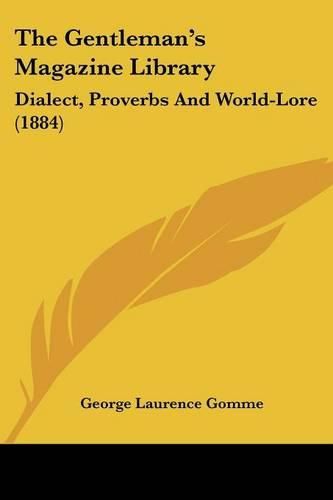Readings Newsletter
Become a Readings Member to make your shopping experience even easier.
Sign in or sign up for free!
You’re not far away from qualifying for FREE standard shipping within Australia
You’ve qualified for FREE standard shipping within Australia
The cart is loading…






Purchase of this book includes free trial access to www.million-books.com where you can read more than a million books for free. This is an OCR edition with typos. Excerpt from book: SPECIAL SUBJECTS. Almanacks. [1838, Part II., pp. 365-369.] THE learned appear by no means agreed respecting the etymology of the word
almanac ; it has been, perhaps, the subject of more dispute than that of any term admitted into our language. Our Saxon ancestors
used to engrave upon certaine squared sticks … the courses of the moones of the whole year … and such a carved stick they called an al-mon-heed. An instrument of this kind is preserved in St. John’s College at Cambridge; and a fac-simile and description of one that was used in Staffordshire has been copied, as a curious specimen, from Dr. Plot’s
Natural History of that county, into the Gentleman’s Magazine for 1812, Part II., p. 109. It is called the clogg, from its form, being usually made of a piece of wood, squared into four plane sides, and with a ring on the upper end of it, to hang it on a nail somewhere in the house. They appear to have been introduced into this country at the Norman Conquest, and in all visits to distant churches, in all pilgrimages, etc., they served for instruction and regularity, and were frequently carved on the tops of pilgrims’ staves, so as to regulate their times of assembling at particular spots. Before printing was introduced, and when manuscripts were scarce and dear, these Runic almanacs were particularly useful in assisting the memory, and that they might be made as universally serviceable as possible, they were sometimes cut on sword scabbards, implements of husbandry, etc. The term
almanac
in the present sense of the word is too well known to require any explanation in this place. There does not appear, however, to be any trace of the original inventors; the first in print is generally admitted to be that of John Muller, of Monte- regio, wh…
$9.00 standard shipping within Australia
FREE standard shipping within Australia for orders over $100.00
Express & International shipping calculated at checkout
Purchase of this book includes free trial access to www.million-books.com where you can read more than a million books for free. This is an OCR edition with typos. Excerpt from book: SPECIAL SUBJECTS. Almanacks. [1838, Part II., pp. 365-369.] THE learned appear by no means agreed respecting the etymology of the word
almanac ; it has been, perhaps, the subject of more dispute than that of any term admitted into our language. Our Saxon ancestors
used to engrave upon certaine squared sticks … the courses of the moones of the whole year … and such a carved stick they called an al-mon-heed. An instrument of this kind is preserved in St. John’s College at Cambridge; and a fac-simile and description of one that was used in Staffordshire has been copied, as a curious specimen, from Dr. Plot’s
Natural History of that county, into the Gentleman’s Magazine for 1812, Part II., p. 109. It is called the clogg, from its form, being usually made of a piece of wood, squared into four plane sides, and with a ring on the upper end of it, to hang it on a nail somewhere in the house. They appear to have been introduced into this country at the Norman Conquest, and in all visits to distant churches, in all pilgrimages, etc., they served for instruction and regularity, and were frequently carved on the tops of pilgrims’ staves, so as to regulate their times of assembling at particular spots. Before printing was introduced, and when manuscripts were scarce and dear, these Runic almanacs were particularly useful in assisting the memory, and that they might be made as universally serviceable as possible, they were sometimes cut on sword scabbards, implements of husbandry, etc. The term
almanac
in the present sense of the word is too well known to require any explanation in this place. There does not appear, however, to be any trace of the original inventors; the first in print is generally admitted to be that of John Muller, of Monte- regio, wh…